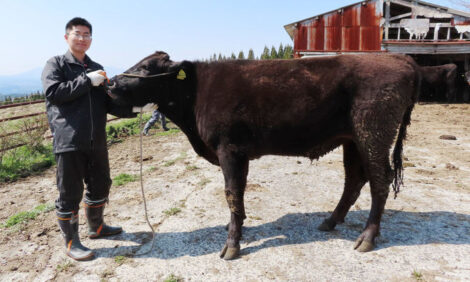



NCBA: Tips to rebuild the cow herd
Zoetis veterinarian describes how producers can expand the herd safely and efficientlyDr. Dan Tracy, beef technical services veterinarian with Zoetis, recently spoke to The Cattle Site’s Sarah Mikesell at the NCBA Cattlemen's Convention in Orlando, Florida, USA.
Editor’s note: this interview has been edited for length and clarity.
Let's talk about cow herd expansion. How can producers expand the herd safely and efficiently?
Safety is the most important consideration. We spend time and money to develop a herd, genetics and maintain a calf crop, but safety should be on the top of everybody's mind.
One of the aspects of safety, if we are contemplating bringing new cows in, is to ask questions about the vaccine status - the timing of the vaccines, vaccines used and whether they are a modified live or killed vaccine.
Additional questions that need to be asked are what have you currently evaluated on the farm and had problems with? What are some pushbacks that you’ve had as far as health and how did you advance those? How do you test the herd?
Those are all good questions, and they are fair questions. Again, the goal is to protect the herd.
What disease can sneak into a cow herd?
One of the biggest things that I have seen sneak into herds is BVD in the form of a persistently infected calf. If you are bringing pregnant animals in, we may not have any issues with the cow, but that calf is a biological sample of what it has been exposed to.
Trust me, BVD is not something we want to have, because it can go under the radar, and suddenly you sell a calf, and you get information back that says that was a persistently infected calf.
One of the issues is if that pregnant cow gives birth to a persistently infected calf, it risks exposure to all the cows that are pregnant, and it happens early in gestation. Exposure could produce calves that a producer could have difficulty marketing, and the producer may not have good reproductive performance in the herd.
We are talking about cattle that must pay their way. Cattle that need to pay back the cost of that cow and in the profitability of the farm. We want to continue that forward momentum and something like a persistent infected calf could set you back as well to certainly increase your challenges in the herd.
Is biosecurity important for a cow producer?
It is important and we must be mindful of biosecurity. If we bring in pregnant heifers, or if we buy some good heifers with genetic merit. We must ask important health questions.
- What kind of health programs are you currently under?
- What kind vaccine program that you are under?
- What is the timing of the vaccine?
The answers give you an idea of the immune competence of the heifers and their ability to resist a challenge and that gives more confidence in those heifers too. But again, I still would use caution. If you have a herd that you bring in new pregnant heifers, I recommend keeping those heifers in quarantine until you get some analysis of the farm. Plus, you become good stewards of your fellow cattlemen.
If you do find evidence, it would be good for them to know as well because they need to know those facts and consult their veterinarians.
How do bulls affect the expansion of the herd?
Another aspect to be mindful of is bulls, and we talk a lot about cows and pregnancy, but the same goes for the bulls.
The same questions need to be asked as far as the safety of those bulls because you can have a male-spread disease as well.
The bull can impact the whole herd’s health. The bull is the one common thing that the cow herd shares so asking the important safety questions is critical.



